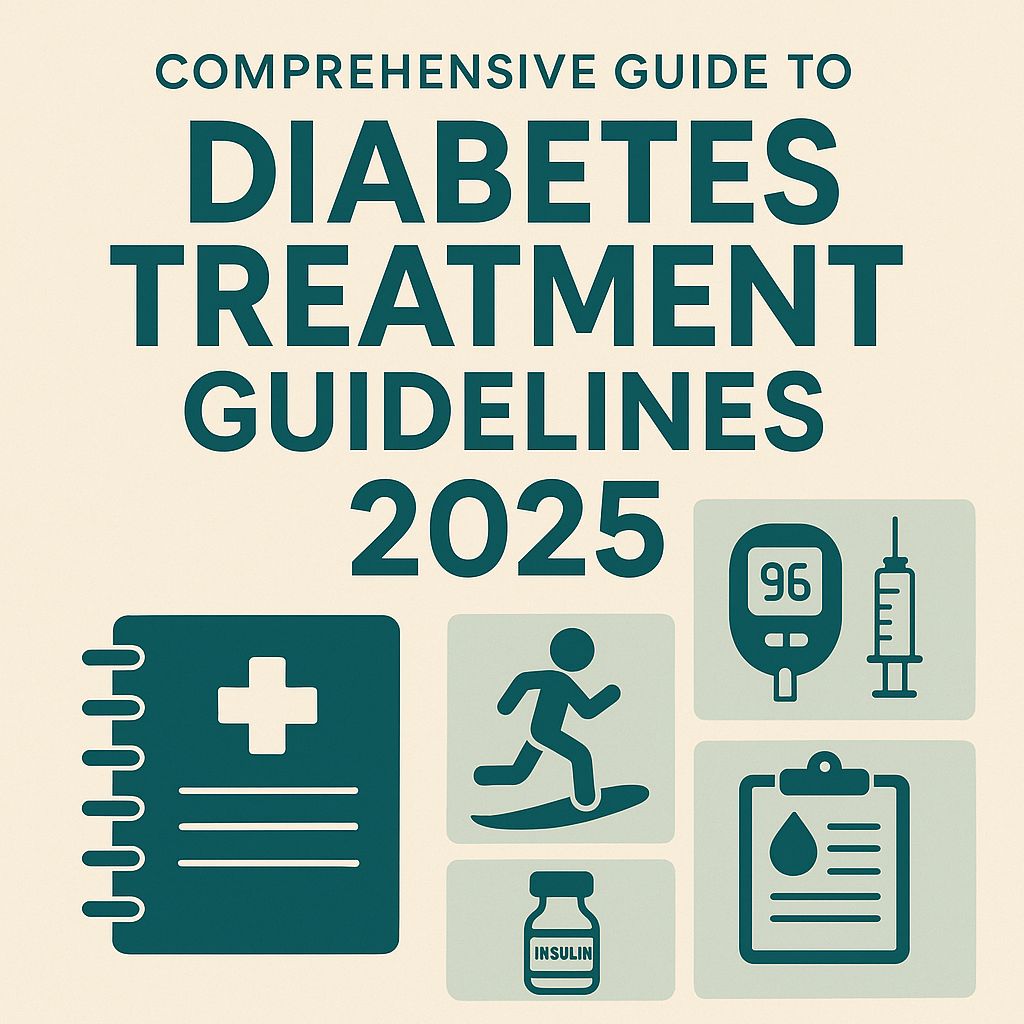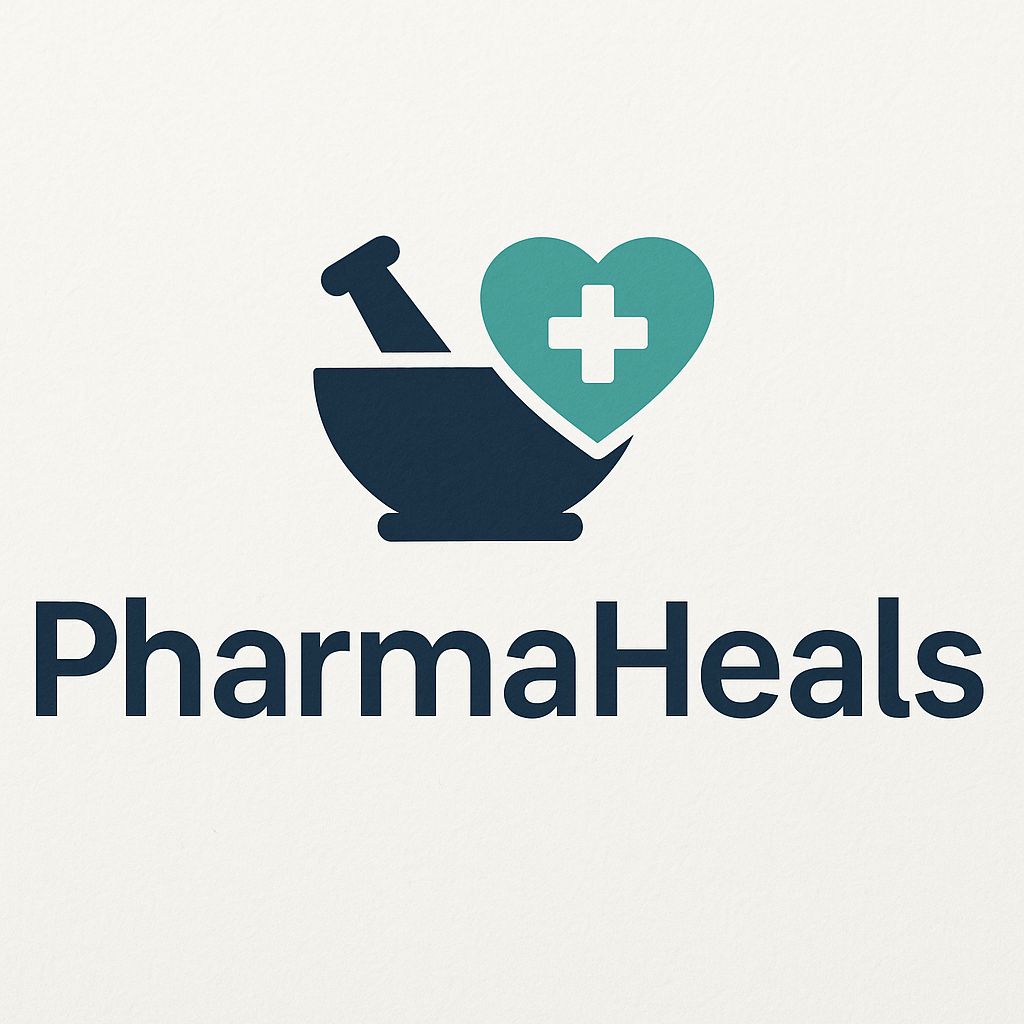Diabetes mellitus is a chronic, lifelong condition affecting over 537 million people globally (IDF 2023). Despite numerous advances in diagnosis and treatment, diabetes remains one of the leading causes of cardiovascular disease, kidney failure, and vision loss.
As a licensed pharmacist, I’ve seen firsthand how evidence-based treatment guidelines can drastically improve outcomes. This guide will walk you through the latest 2025 diabetes treatment guidelines, helping patients, caregivers, and healthcare professionals make informed decisions.
Understanding Diabetes
What is Diabetes?
Diabetes occurs when the body either doesn’t produce enough insulin (Type 1) or can’t effectively use the insulin it does produce (Type 2). There’s also gestational diabetes (GDM), which appears during pregnancy, and other less common forms like MODY and LADA.
Type 1 vs Type 2 Diabetes (Quick Comparison)
| Feature | Type 1 Diabetes | Type 2 Diabetes |
| Onset | Childhood/Adolescence | Adulthood (increasing in youth) |
| Cause | Autoimmune | Insulin resistance & lifestyle |
| Treatment | Insulin | Lifestyle + oral/injectables |
| Prevention | Not preventable | Largely preventable |
Goals of Diabetes Treatment
The ultimate goal is glycemic control without hypoglycemia. According to ADA & EASD:
• Short-term goals:
• Prevent symptoms (fatigue, frequent urination, blurred vision)
• Avoid hypoglycemia
• Long-term goals:
• Prevent/delay complications (nephropathy, retinopathy, neuropathy)
• Improve quality of life and longevity
• Individualize treatment based on patient profile
ADA & EASD Diabetes Guidelines 2025 Overview
The American Diabetes Association (ADA) and European Association for the Study of Diabetes (EASD) regularly update their consensus statements. Here are the key highlights for 2025:
First-Line Treatment
• Lifestyle modifications + Metformin remain the gold standard.
• For patients with CVD, CKD, or heart failure, GLP-1 receptor agonists or SGLT2 inhibitors may be prioritized regardless of HbA1c.
Dual & Triple Therapy
If glycemic targets are not met in 3–6 months:
• Dual therapy: Add GLP-1 RA or SGLT2i based on comorbidities.
• Triple therapy: May include DPP-4 inhibitors, TZDs, basal insulin, or sulfonylureas.
When to Initiate Insulin
• HbA1c >10% or blood glucose >300 mg/dL with symptoms
• Start basal insulin first; intensify if needed.
Cardiovascular and Renal Considerations
• SGLT2 inhibitors: Benefit in HF and CKD.
• GLP-1 receptor agonists: CV benefits in patients with ASCVD.
Pharmacologic Treatment Based on Patient Profiles
| Patient Type | Preferred Medications |
| ASCVD | GLP-1 RA (liraglutide, semaglutide) or SGLT2i |
| Heart Failure or CKD | SGLT2i (dapagliflozin, empagliflozin) |
| Concerned about hypoglycemia | DPP-4I, GLP-1 RA, SGLT2i |
| Weight loss desired | GLP-1 RA or SGLT2i |
| Cost-sensitive | Metformin, Sulfonylureas, TZDs |
Lifestyle Management in Diabetes
Lifestyle interventions remain foundational. The 2025 guidelines emphasize:
Diet
• Focus on low glycemic index foods, lean proteins, fiber, and healthy fats.
• Refer to our Low Glycemic Foods List for Diabetics for guidance.
• For a structured meal plan, follow our 28-Day Diet Plan for Diabetics.
Exercise
- At least 150 minutes/week of moderate activity
- Combine with morning habits to control blood sugar to enhance effect.
Behavioral Therapy
• Cognitive behavioral therapy (CBT) and diabetes self-management education (DSME)
Glycemic Monitoring and Targets
| Metric | Target (General Population) |
| HbA1c | <7% |
| Fasting BG | 80-130 mg/dL |
| Postprandial BG | <180 mg/dL |
Monitoring Tools
• Continuous Glucose Monitoring (CGM) preferred for T1DM and insulin-treated T2DM.
• Flash glucose monitoring gaining popularity in non-insulin patients.
Non-Pharmacologic & Adjunctive Therapies
• Bariatric Surgery: Considered for BMI ≥35 with T2DM not controlled with meds.
• Medical Nutrition Therapy (MNT): Tailored diets by dietitians.
• Sleep Optimization: Address OSA in overweight diabetics.
Special Populations
Gestational Diabetes (GDM)
• Early screening recommended in high-risk women
• Insulin remains the preferred pharmacotherapy if lifestyle fails
Elderly Patients
• Individualize targets (HbA1c <8% may be acceptable)
• Prioritize safety, simplicity, and avoiding hypoglycemia
Patients with CKD
• Use SGLT2i and adjust medications based on eGFR
The Role of the Pharmacist in Diabetes Care
As frontline healthcare providers, pharmacists play a crucial role in:
• Educating on medication use, side effects, and adherence
• Screening and monitoring A1c, BP, lipids
• Helping identify drug-drug interactions
• Encouraging vaccinations (e.g., flu, pneumococcal)
Future Directions in Diabetes Management
What’s Coming in 2025 and Beyond?
• Artificial pancreas technology for T1DM
• GLP-1 + GIP co-agonists (e.g., Tirzepatide) gaining momentum
• Digital health tools & AI-based coaching
• Oral insulin formulations in development
FAQs
What is the first-line treatment for type 2 diabetes in 2025?
Metformin plus lifestyle modification remains first-line unless comorbidities exist, in which case GLP-1 or SGLT2i may be prioritized.
How often should HbA1c be checked?
Every 3–6 months depending on stability of glycemic control.
When should insulin be initiated?
If HbA1c >10%, glucose >300 mg/dL, or severe symptoms are present.
Can diabetes be reversed?
Yes. Learn how to lower blood sugar quickly without insulin using pharmacist-approved strategies.
Are GLP-1 drugs safe long-term?
Yes, especially semaglutide and liraglutide, which also offer cardiovascular protection.
Conclusion
Managing diabetes in 2025 goes far beyond just lowering blood sugar. It’s about holistic, patient-centered care—addressing comorbidities, lifestyle, emotional health, and social determinants. As a pharmacist, I emphasize the importance of adherence, regular follow-up, and patient empowerment.



